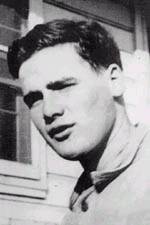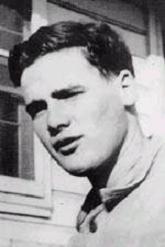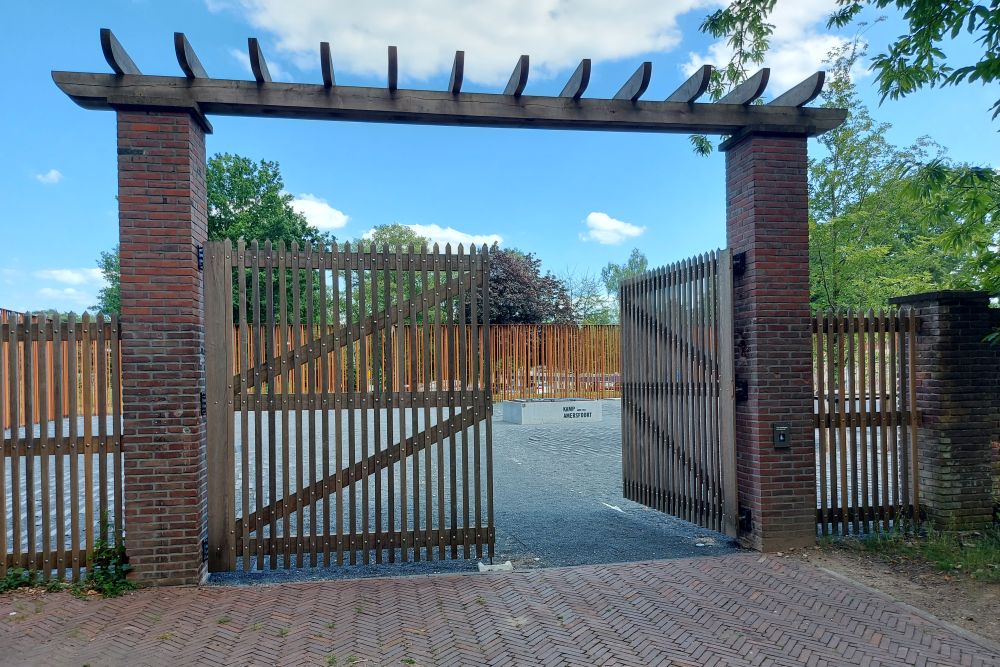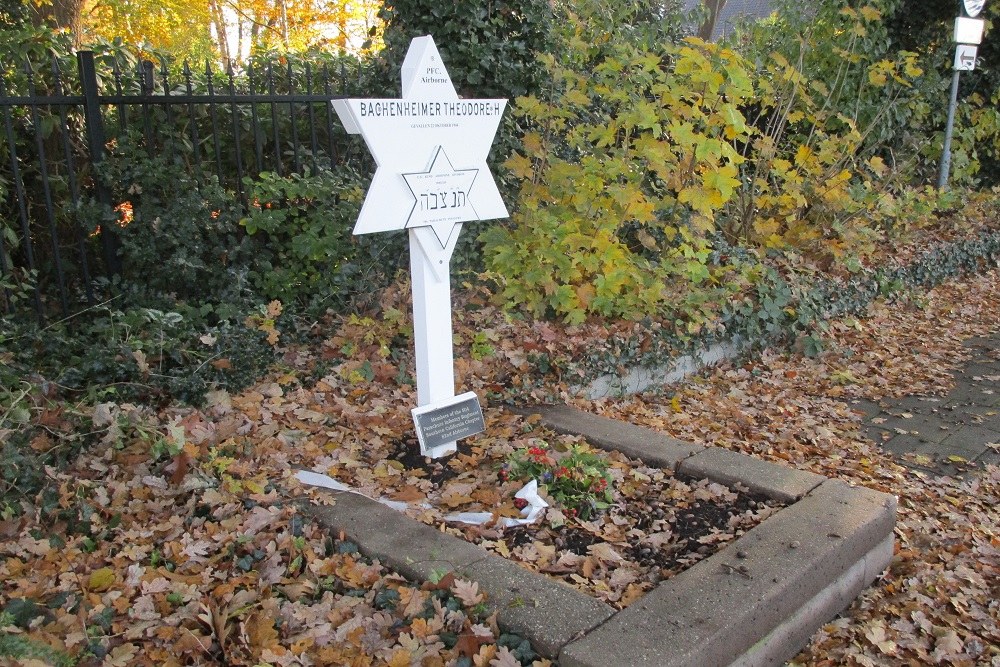Bachenheimer, Theodore Herman "Ted"
- Date of birth:
- April 23rd, 1923 (Braunschweig, Germany)
- Date of death:
- October 22nd, 1944 ('t Harde, The Netherlands)
- Buried on:
- Beth Olam Jewish Cemetery
- Service number:
- 19063269
- Nationality:
- American
Biography
Theodore 'Ted' H. Bachenheimer was born as a German Jew on 23 April 1923 in Braunschweig, Germany. Ted had one younger brother called Klaus, his father was a composer and conductor while his mother acted in various theaters.
The Bachenheimer family left Germany in 1933 due to pressure of the nazi's. Via Prague, Vienna and Cherbourg they reached the United States of America in 1934 and became American citizens.
Ted Bachenheimer volunteered for the Army Paratroops in 1942, after the attack on Pearl Harbour. After completing his training he entered the 504th Parachute Infantry Regiment, which was attached to the 82nd Airborne Division in August 1942. Ted Bachenheimer married Ethel Murfield just before leaving for Europe.
Bachenheimer took part in operation Husky, the allied invasion of Sicily. When this operation was completed the 504th PIR was transferred to Italy's mainland were Bachenheimer fought in the battles for Salerno and Anzio. Bachenheimer received the Silver Cross for his actions as a scout at Anzio and his regular reconnaissance missions behind German lines made him a legend in the 82nd Airborne Division.
As a part of Operation Market Garden, Ted Bachenheimer landed near Grave, The Netherlands, on 17 September 1944. After a reconnaissance in the German occupied city of Nijmegen he became the leader of the local Dutch resistance group and was therefore called "the GI General".
On 16 October 1944, Ted Bachenheimer was captured together with Captain Peter Baker of IS-9 at the resistance safe house of Fekko Ebbens. They were there as part of Operation Windmill, which was an escape route for British 1st Airborne soldiers that were left behind in German occupied Holland after operation Market Garden.
The next morning, Bachenheimer and Baker were interrogated for hours in a village near 's-Hertogenbosch. On October 18, the two were transferred to the POW camp in Culemborg, after which they continued on their way on foot to the POW camp in Amersfoort.
A transport to a camp in Fallingsbostel on October 22 ends dramatically. Bachenheimer and three other prisoners manage to escape the train in which they were transported. What happened next is not entirely clear. What is certain: In the night of 22 to 23 October, two shots were heard at Eperweg at 4 o'clock in the morning. The Air Defense Commander (Huurman) was called on October 23 at 9.15 am, from the Truppen Übungsplatz Oldebroek, to pick up the killed Bachenheimer there. According to the report of the Air Defense Commander (Huurman), Bachenheimer was killed at close range by a shot to the back of the head. The same report also speaks of a neck shot.
Bachenheimer was buried in the afternoon of October 23 at the Eekelenburg in Oldebroek (grave 14), after which his reburial took place at Neuville-en-Condroz American Cemetery (Plot J, Row 11, Graf 275) in April 1946. Three years later, Bachenheimer was given his final resting place at the Beth Olam Jewish Cemetery in Hollywood, USA.
Dutch researcher Dick Breedijk notes the following:
"The distance between the place of arrest and the place where the body was collected is 3 kilometers. It is very unusual for the body to be moved that far after a liquidation. The Germans strictly adhered to the rule that a victim should also be buried in the municipality where he had fallen. The place of the monument was in the Municipality of Doornspijk. The "Ugergansplatz Oldebroek" (now ASK Oldebroek) was located in the Municipality of Oldebroek! I can't name a single place (I'm researching since 1980) where a shot / murdered victim was moved 3 kilometers by the Germans.
Do you have more information about this person? Inform us!
- Period:
- Second World War (1939-1945)
- Rank:
- Private
- Unit:
- Headquarters Company, 1st Battalion, 504th Parachute Infantry Regiment, 82nd Airborne Division "All American", U.S. Army
- Awarded on:
- June 14th, 1944
"For gallantry in action. On the night of 3-4 February 1944, Private Bachenheimer volunteered to lead a six-man patrol into the German lines near ----- Italy, with the mission of capturing prisoners. After one fire fight, in which one of the patrol members was killed, Private Bachenheimer sent two men back with the information and crawled forward leading the remaining three men still deeper into the enemy lines. Encountering more out guards, Private Bachenheimer impersonated a German soldier and inched away his way forward until his ruse was detected and enemy machine pistols opened fire. In the ensuing fight, the four man patrol killed three enemy and Private Bachenheimer disarmed one German, took him prisoner and lead his three men and the priosner safely back to friendly lines."
General Orders No.118, Headquarters 3rd Infantry Division (June 14th, 1944).
- Period:
- Second World War (1939-1945)
- Rank:
- Private
- Unit:
- Headquarters Company, 1st Battalion, 504th Parachute Infantry Regiment, 82nd Airborne Division "All American", U.S. Army
- Awarded on:
- January 7th, 1952
"Distinguished himself by brave conduct against the enemy when after having been dropped on the 17th of September 1944 near GRAVE he proceeded alone and in a daring manner during the afternoon of the 19th following in the direction of the railway station at NIJMEGEN. In particular by, after having met a foreman of Tracks at Works of the Netherlands railways, penetrating with him from the viaduct near the Graafseweg across the railway yard into the station
Further by, having arrived there unseen, and after the foreman had taken a carabine with ammunition and hand grenades from a train in an exceedingly bold way, while he was being covered by him with his weapon, proceeding in extremely cautious manner to the amplifier installation of the public address-system on the second platform, while was then put into operation by the foreman of the railways.
Further by, after the foreman had given an menacing order to surrender themselves, to the enemy occupying the station which had just gathered for a meal, firing his automatic weapon directly in front of the microphone, with the rest that the whole occupation of the enemy was about forty men, fled the station in panic.
At last by resorting with the foreman to the Western part of the station, expulsing some enemies by firing on them and holding the station, until forced by well directed enemy artillery-fire from across the river Waal, they had to withdraw, after which the station was once more occupied by a strong enemy party."
Awarded posthumously.
Royal Decree No.24, dated January 7th, 1952.
- Period:
- Second World War (1939-1945)
- Period:
- Second World War (1939-1945)
- Period:
- Second World War (1939-1945)
- Period:
- Second World War (1939-1945)
- Period:
- Second World War (1939-1945)
- Period:
- Second World War (1939-1945)
- Period:
- Second World War (1939-1945)
Sources
- Photo 1: Jim McNamara, Strikehold 504th.com
- Photo: Jim McNamara, Strikehold 504th.com
- - Dutch Knight orders and Decorations
- Strikehold 504th.com
- Bachenheimer - door Dick Breedijk
- 't Harde, monument voor Theodore Bachenheimer - Nationaal Comité 4 en 5 mei : Nationaal Comité 4 en 5 mei
- After the Battle No.117
- Society Friends of the Airborne Museum of May 2002 Newsletter
- Frank van Lunteren
- Jim McNamara














